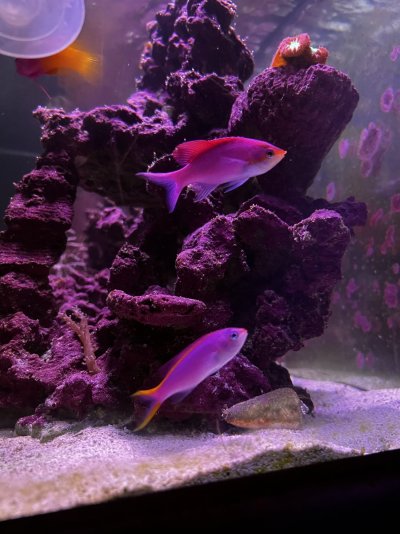I was gifted a mature, stable, but neglected 75g reef a few months ago, quickly added a lot of fish without quarantine and had A very mild ich outbreak. Started dosing Polyp Lab Medic in response and a few days later, I noticed small amounts of dinoflagellate algae everywhere in my display tank. Fortunately it isn’t so aggressive that it’s blanketing everything but it is certainly becoming a nuisance. Took me a few days to realize the medication may be the cause of this. My system depends on a DIY algae turf scrubber and Reef Octopus 110-INT for nutrient export. I believe this medication may be stressing the turf algae in my scrubber enough to reduce its effectiveness at nitrate and phosphate removal. The literature supplied with Polyp Lab’s “Medic” calls it an “oxidizing agent” that is “buffered to maintain physiological PH.” This makes pretty clear that the medication is some kind of salt that dissociates to release molecules that are eager to get rid of an Oxygen atom, much like Hydrogen Peroxide: the chemical we use to instantly kill algae on our frags. There are numerous papers out there on how different types of algae react to oxidative stress, and I even noticed one about using similar oxidizing salts to control algae in drinking water reservoirs. I’m hoping this clears up once I finish this course of course, I can’t wait to end the doses and throw in a fresh bag of carbon. Numerous members have used this medication with mixed results, I was just curious if anyone else has noticed similar changes in the balance of their algae populations from using this product, and if anyone happens to know what the primary chemical in “Medic” is.



















